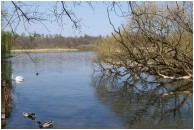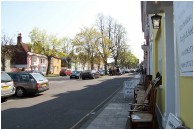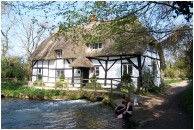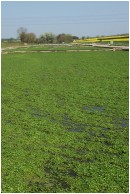| |
 
THE
ATTRACTIONS OF ALRESFORD
 |
|
Mention Alresford
and what do you think of? Oh yes, that
nice market town a few miles north-east
of Petersfield with the steam railway. Or
perhaps, if you are a bird watcher, the
Pond, which holds large numbers of
wildfowl, especially in winter, and
sometimes, in autumn, attracts a
migrating osprey. Or the lovely wide Broad
Street with cars parked everywhere along
both sides, or the surviving small shops
which retain much of the town’s
olde-worlde character. Or watercress.
|
Yes, watercress, now
designated as the ultimate superfood, rich in
vitamins and minerals, a cure for almost
everything. It has been grown around Alresford
for nearly two hundred years, thriving in the
fast-flowing, chalk-rich streams. Production
intensified with the coming of the railway in
1865, giving easy communication with the London
markets, and continues today, though it is now in
the hands of the Watercress Alliance - Geest,
Vitacress and the Watercress Company, who,
between them farm more than 100 acres in
Hampshire and Dorset. Sunday 13 May sees the
annual Watercress Festival in the town.
| The original
Alresford was a mile to the north, now
known as Old Alresford. The present town
came into being in the 13th century, when
King John granted Godfrey de Lucy, the
Bishop of Winchester, a market, an annual
fair and various mills, thus establishing
a new town. It has been suggested that
the pond was created at this time to
provide a head of water to turn the River
Itchen into a navigable canal. More
likely it was just a huge fishpond for
the Bishop’s Palace at Bishops
Sutton. |
|
 |
|
 |
During the 14th century
Alresford was one of the ten biggest wool markets
in the country, not perhaps the equal of the
great wool towns of the Cotswolds and East
Anglia, but the town became a prosperous trade
centre for wool and leather. Despite the setbacks
of the Black Death and the Plague, prosperity
continued, until rudely interrupted by a series
of disastrous fires in the 17th and 18th
centuries. One of these was said to have been
caused by Royalist troops retreating from the
nearby Battle of Cheriton.
 |
|
So the town had to
be rebuilt, several times, in fact. But
the original T-shaped street plan was
always adhered to, and the elegant
Georgian buildings survive to this day,
much admired by lovers of urban
landscapes.
Perhaps the best way to see Alresford is
to follow the Millennium Trail. Setting
out from the station, where the
Watercress Line celebrates its 30th
birthday this year, it passes through the
churchyard and into Broad Street, the
heart of the town, where the mediaeval
market hall once stood. Down to the Lake
and the Town Mill, the Trail turns left
towards the river and the famous Fulling
Mill.
Now a beautiful private house, here raw
cloth was hammered into usable material,
and what is now a quiet idyll must have
once thundered with industrial
hammer-blows. A few more yards along the
river bank and another left turn takes us
back into the town at the bottom of West
Street.
|
One final question. The
town is Alresford, but the river, is it the Alre
or the Arle?
Tom Muckley
This article was originally
published by the
Petersfield Post
tommuckley.co.uk
|
|





